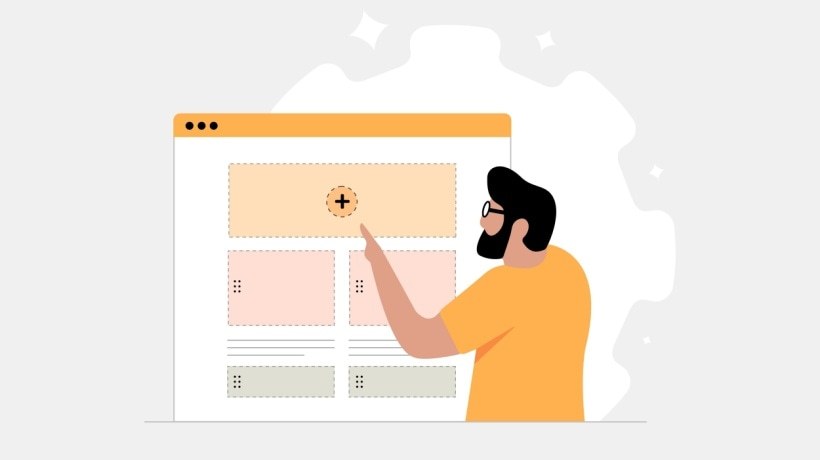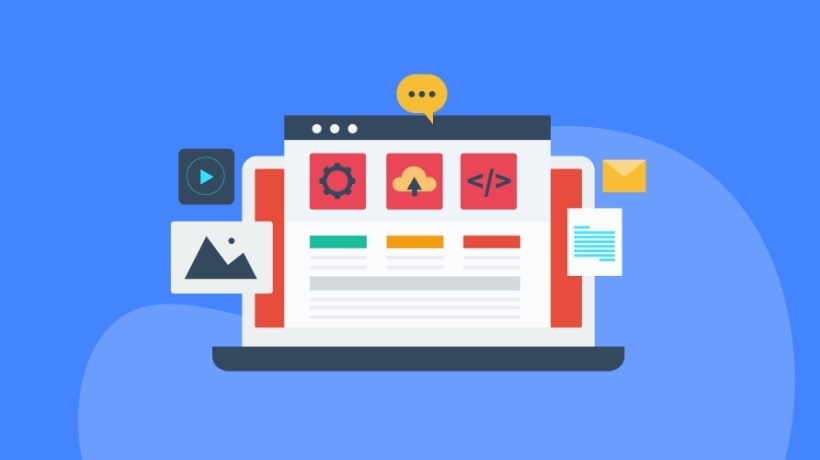Bridging People, Skills, And Digital Transformation
Digital transformation fails when people can't keep pace. No‑code gives Learning and Development (L&D) a rapid, data‑driven way to design, deliver, and iterate upskilling that maps directly to business outcomes—without waiting on IT queues.
Why Upskilling Must Evolve—Now
Every leader today knows one truth: digital transformation isn't about technology alone, it's about people. You can have the latest AI tools, data platforms, or automation systems, but if your workforce doesn't adapt, progress stalls. This is where Learning and Development becomes mission‑critical.
The challenge? Traditional upskilling methods often move too slowly. By the time a course is designed, approved, and rolled out, the technology it addresses has already evolved. Employees feel stuck, leaders get frustrated, and transformation goals slip away.
Enter no‑code technology. For L&D, it's not just another tool, it's a way to respond to change at the speed of business. It allows teams to design learning programs, simulations, and support systems without waiting for IT or expensive vendors. The result? Upskilling that is fast, relevant, and human‑centric.
What It Really Means To Align L&D With Transformation Goals
Aligning L&D with digital transformation isn't about adding more training hours. It's about ensuring learning directly supports big‑picture goals, such as:
- Faster tech adoption
Helping employees embrace automation and AI‑driven workflows without fear or confusion. - Elevating customer experience
Equipping teams to deliver on new service models and personalization strategies. - Building a data‑driven culture
Making sure everyone, not just analysts, can confidently use data in their day‑to‑day work. - Ensuring compliance and security
Embedding guardrails and new policies into practical, everyday guidance. - Driving agility
Giving employees the confidence to adapt to new roles, tools, and processes quickly.
No‑code empowers L&D to translate these goals into hands‑on experiences employees can immediately apply in their work.
The Human Advantage Of No‑Code
So, why does no‑code matter for people? Let's break it down:
- It shortens the distance between need and solution.
Instead of waiting months for a course, employees get what they need in weeks—or even days. - It makes learning more relatable.
L&D teams can build micro‑apps, guided workflows, or simple bots that feel like part of employees' real work, not an extra task on their plate. - It's data‑friendly, but human‑first.
Learning is tracked and measured, but the focus stays on how people actually feel and perform, not just on completion rates. - It empowers collaboration.
Subject Matter Experts and trainers can co‑create content together, ensuring learning reflects real‑world challenges. - It personalizes learning at scale.
Employees get pathways designed around their roles and skill levels instead of a one‑size‑fits‑all approach.
From Strategy To Skills: A Practical Road Map
Here's a simple framework L&D teams can follow to align with transformation goals:
1. Start With The Business strategy
Ask: What are we trying to achieve? If the goal is, say, reducing manual processes, then the skill outcome might be training employees to use automation tools confidently.
2. Translate Strategy Into Skills
Build a "skills graph" that maps roles to the specific capabilities they need. This creates clarity and direction.
3. Build Small, Testable Learning Experiences
Instead of designing long, one‑off courses, use no‑code to build quick simulations, micro‑apps, or guides. Think of them as minimum viable learning experiences (MVLEs).
4. Pilot, Listen, And Improve
Launch these experiences in sprints. Collect real feedback from learners. What worked? What felt clunky? Refine accordingly.
5. Connect Learning To Business Outcomes
Don't just measure course completions. Track the impact—error reduction, faster task completion, or improved customer scores.
Human‑Centric Use Cases
Here are a few ways no‑code can make learning both practical and human:
- Guided workflow adoption
Instead of a long manual, employees get a simple app guiding them through a new process step by step. - Role‑based learning paths
Employees see content that's relevant to their role, saving time and avoiding frustration. - Safe practice environments
Simulations let employees practice in a risk‑free space before applying new skills live. - On‑demand SOP bots
No more searching through outdated PDFs—employees can ask a bot for the latest steps instantly. - Peer‑created lessons
Experts on the ground can share short lessons through structured templates, amplifying knowledge across teams.
Each of these examples respects employees' time and need for clarity, while aligning directly to transformation milestones.
Real-Life Scenarios: No-Code In Action
Let's make this more concrete by looking at how different employees in various industries benefit from no-code upskilling:
Frontline Agent (Retail)
A customer service rep at a large retail chain uses a no-code guided workflow to handle returns in a new POS system. Instead of memorizing steps, the system walks them through each stage. Result: shorter queues, happier customers, and less stress for the agent.
Manager (Banking)
A branch manager needs to train staff on compliance updates. With no-code, she builds a simple assessment and micro-course tailored to her branch's needs. Updates roll out instantly across locations. Result: higher compliance scores and fewer errors during audits.
Data Analyst (Healthcare)
Analysts in a hospital setting often struggle with new reporting systems. With a no-code sandbox app, they practice generating reports on patient flow before go-live. Result: faster onboarding and reduced reporting delays.
Field Technician (Manufacturing)
A technician repairing factory equipment gets access to a no-code checklist app with embedded safety prompts. As soon as a regulation changes, the app updates. Result: safer practices, lower downtime, and fewer accidents.
These scenarios show that no-code isn't just about technology—it's about making life easier for employees, regardless of role or industry.
Measurement That Actually Matters
When it comes to upskilling, numbers matter—but people matter more. Here's how to measure with a human lens:
- Learning metrics
Are employees completing lessons? Do they feel more confident in new skills? - Business metrics
Are errors going down? Are processes faster? Are customers happier? - Adoption metrics
Are employees actually using the new tools, or falling back on old habits?
By pairing learning data with human stories—like employees feeling less stressed about new tools—you create a stronger case for the value of L&D.
A 90‑Day Example Plan
- Weeks 1–2
Meet with transformation leaders. Choose one or two areas where skills are critical. Define the outcomes and select pilot teams. - Weeks 3–4
Build a quick learning prototype using no‑code. Test it with a small group. Gather immediate feedback. - Weeks 5–8
Expand the pilot. Track confidence levels and performance metrics. Refine based on input. - Weeks 9–12
Roll out more broadly. Share success stories. Present clear before‑and‑after results to leadership.
Making Change Stick
Upskilling only works if people embrace it. To make it stick:
- Build a champion network—early adopters who can inspire peers.
- Embed learning in the flow of work—= so employees don't have to stop what they're doing.
- Share stories, not just statistics—real wins motivate more than dashboards alone.
- Encourage experimentation—let people try, fail safely, and learn.
- Reward progress and tie skill growth to recognition and career opportunities.
Watch Out For These Pitfalls
- Creating content for the sake of it instead of linking to real needs.
- Overloading employees with too much information at once.
- Ignoring accessibility and inclusivity in learning design.
- Failing to measure results beyond course completions.
What's Next For L&D In A No-Code World
No-code is just the beginning. Here's what the future holds for learning teams:
- AI-powered personalization
No-code platforms will increasingly integrate with AI, tailoring learning experiences in real time to each employee's performance and preferences. - Citizen development in L&D
Trainers and subject experts will act like product creators, designing micro-apps and learning workflows without writing code. - Integrated analytics
Expect seamless dashboards that combine learning metrics with business performance data, showing ROI in clear, compelling terms. - Learning in the flow of AI tools
As AI copilots become part of everyday work, no-code will help L&D embed training directly within those AI-powered tools. - Continuous upskilling culture
Instead of one-off programs, no-code will enable ongoing cycles of bite-sized, role-based learning aligned to every stage of transformation.
The big shift? L&D won't just support digital transformation, it will drive it.
Wrapping Up: The Human Side Of Digital Transformation
At its heart, digital transformation is a story about people—how they work, how they learn, and how they grow. No‑code is a powerful enabler for L&D teams because it brings speed, flexibility, and personalization into the learning process. But beyond that, it makes learning human again: practical, relevant, and embedded into everyday work.
When employees feel supported instead of overwhelmed, when they see how new skills help them succeed, transformation stops being a challenge and starts being an opportunity. The future of upskilling isn't just about smarter tools. It's about smarter, more human learning.






